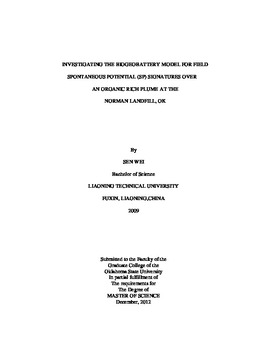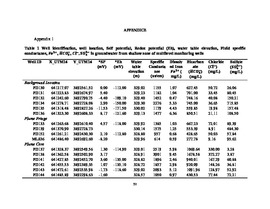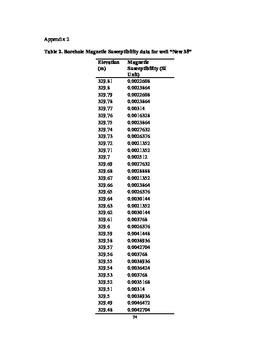| dc.contributor.author | Wei, Sen | |
| dc.date.accessioned | 2014-03-14T21:52:22Z | |
| dc.date.available | 2014-03-14T21:52:22Z | |
| dc.date.issued | 2012-12-01 | |
| dc.identifier.uri | https://hdl.handle.net/11244/8070 | |
| dc.description.abstract | A Self Potential (SP) survey was conducted over the leachate plume emanating from the Norman Landfill site in Norman, OK. Investigating the source mechanism of SP signatures will improve geophysical imaging techniques for non-invasive and sustainable monitoring of plume conditions within urban landfill sites. Recent studies have suggested a strong correlation between SP anomalies and microbial driven redox processes recorded at landfill sites. These studies suggest that strong current sources (biogeobatteries) are generated at the sharp redox boundary occurring at the water table interface where biofilms and metallic biominerals can facilitate electron transfer between reduced and oxidized zones. However this biogeobattery model is highly debatable since so far only one study has documented its validity at organic rich contaminated sites. Therefore the objectives of this study include: 1). acquire SP, electrical resistivity (ER) data across the landfill leachate plume; 2). use existing geochemical data to verify the occurrence of active biodegradataion and the terminal electron acceptor processes; 3). determine the existence of bio-induced metallic minerals that may serve as conductors that facilitate electron transport from reduced (below the water table) to oxidized zones above the water table and 4). confirm or refute the existence of the biogeobattery model at the Norman Landfil as a driving mechanism for the SP anomalies. SP measurements, electrical resistivity (ER) survey, geochemical data and borehole magnetic susceptibility measurements were made. Small SP anomalies (ranging from 9 to -12 mV) were obtained over the landfill leachate plume; electrical resistivity data was able to delineate the leachate plume (ranging from 5~15 ohm.m). In addition, a high magnetic susceptibility (increase from 0.004 to 0.009 SI unit) layer was found existing just below the water table interface. Although the magnetic susceptibility data suggests the presence of metallic biominerals (greigite) capable of moving electrons across the water table interface bridging anaerobic and aerobic environments, the small SP anomalies negates the existence of a bio-geobattery as a source of the SP anomalies. Instead the SP anomalies can be simply explained as resulting from diffusion potentials. | |
| dc.format | application/pdf | |
| dc.language | en_US | |
| dc.publisher | Oklahoma State University | |
| dc.rights | Copyright is held by the author who has granted the Oklahoma State University Library the non-exclusive right to share this material in its institutional repository. Contact Digital Library Services at lib-dls@okstate.edu or 405-744-9161 for the permission policy on the use, reproduction or distribution of this material. | |
| dc.title | Investigating the Biogeobattery Model for Field Spontaneous Potential (Sp) Signatures over an Organic Rich Plume at the Norman Landfill, Ok | |
| dc.type | text | |
| osu.filename | Wei_okstate_0664M_12486.pdf | |
| osu.college | Arts and Sciences | |
| osu.accesstype | Open Access | |
| dc.description.department | Boone Pickens School of Geology | |
| dc.type.genre | Thesis | |
| dc.subject.keywords | biogeobattery | |
| dc.subject.keywords | norman landfill | |
| dc.subject.keywords | organic rich plume | |
| dc.subject.keywords | self potential | |


